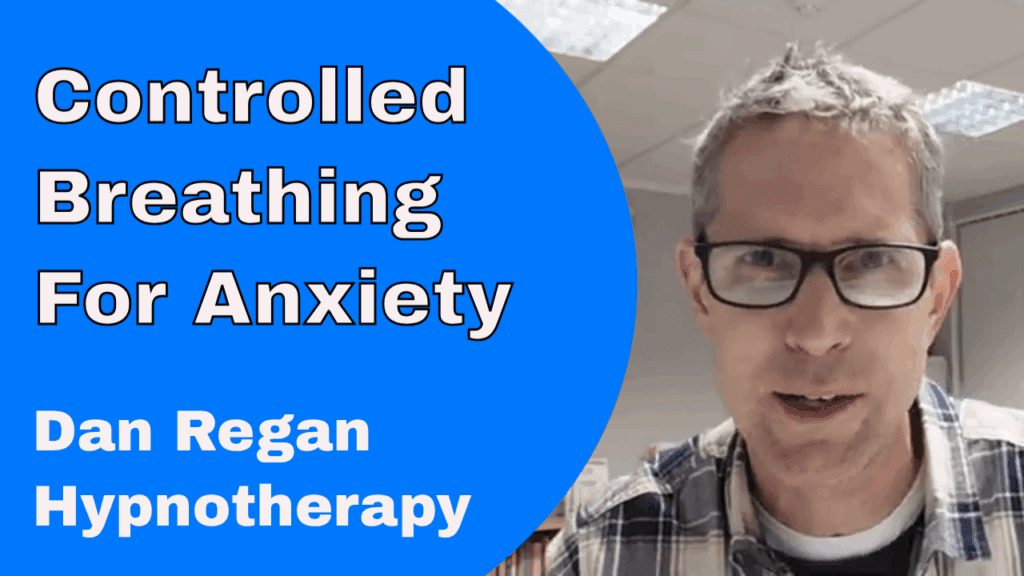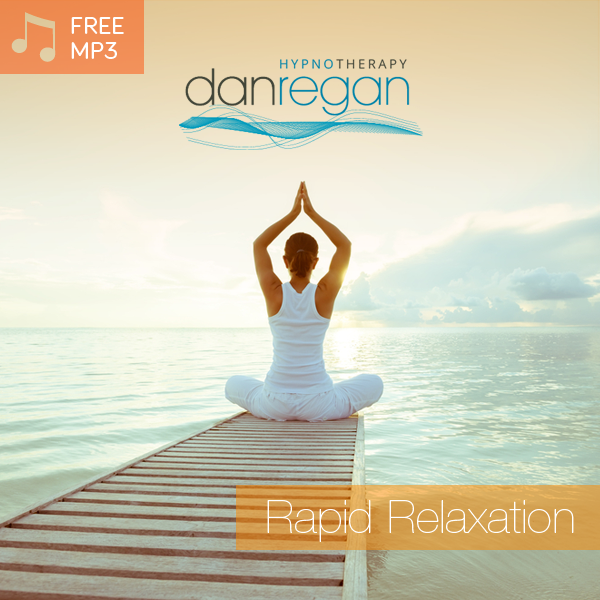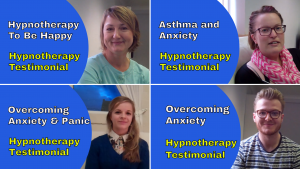Required
Controlled Breathing To Calm Anxious Feelings

Controlled Breathing To Calm Anxious Feelings
Almost everyone with anxiety has tried deep breathing at some point. It tends to be hit and miss whether it helps. So here I’m covering how to use controlled breathing to help calm anxious feelings effectively.
When you feel anxious, your breathing gets faster and shallower. That signals for your heart to beat faster and the adrenaline starts. You notice all of the physical sensations and you know the anxiety is rising. You’ve been here before and you know how bad it makes you feel. You start to panic about becoming anxious and that makes things even worse. Your thoughts and feelings start to spiral and the anxiety takes over.
People who come to see me for help with anxiety often talk about feeling a tightness or weight on their chest. As they talk about anxiety and panic they describe that feeling of constriction. When I hear this I know they are describing their breathing getting faster and shallower. Most of us are pretty oblivious to our breathing most of the time, it just happens all by itself. You may not notice your breathing accelerating but you notice the sensations that follow it.
Anxiety is your body getting ready to actively do something, the fight or flight response. It’s what your body does when you exercise, except there the energy has an outlet as you move. Anxiety can strike when you are just sitting there. Your body is prepared for movement but you aren’t being active. The oxygen, blood and adrenaline goes to your muscles and builds and builds.
In contrast, when you are calm and relaxed, your breathing is slower and deeper. You probably don’t really notice this either, you are too busy relaxing. However, we can use this, how your body works, to calm anxious feelings. One of the most immediate and accessible tools you always have at your disposal is your breathing.
Done right, controlled breathing can help you calm anxious feelings quickly and effectively.
Why Breathing Matters For Anxiety
When you feel anxious, your body starts to shift into fight or flight mode. You may have anticipated it was going to happen based upon previous experience, or sometimes it just seems to come out of the blue for no apparent reason. Your breathing becomes faster and shallower. You breathe from your chest rather than you diaphragm and your body becomes primed for action.
As humans we all have a bias towards anything potentially threatening to us. Our brain and body would rather be ready to deal with a threat should it arise, than to not act and there is an actual threat. That’s an inbuilt survival mechanism, yet sometimes it is oversensitive, kicking in when we don’t need it. And often, the threat is something we are thinking in our own perception, rather than something we can actually fight or run away from.
Your body prepares to face the threat and danger, even though there isn’t one. Of course, this can happen at various levels from a low level feeling of anxiety to a full blown anxiety attack.
Controlled breathing can help calm these anxious feelings. You can reverse the process by doing what your body does when you feel more calm. In effect, you are telling your body to stand down as this is a false alarm. By slowing and extending your out breath, you activate the parasympathetic nervous system, your body’s natural calming response. And if you calm your body then your mind will calm down too.
So when anxiety, controlled breathing reduces anxious feelings and put you back in control over you own thoughts and feelings.
How To Practice Controlled Breathing To Calm Anxious Feelings
If you struggle with anxiety then you’ve probably tried some sort of breathing before. Yet, there are so many options that you are probably never quite sure what works. So here are some reliable techniques you can start using from today (or even right this minute).
Practice them when you feel pretty calm so that you get good at them. It’s like training yourself to be good at managing how you feel. If you already feel calm then you may not notice too much yet, when those anxious feelings start, you want it to be second nature to use one of these techniques to nip it in the bud.
1. Diaphragmatic (Belly) Breathing
- Sit or lie down comfortably
- Place one hand on your chest and one hand on your belly
- Breathe in slowly through your nose, allowing your belly to rise as you do so
- Breathe out gently through your mouth or nose, allowing your belly to fall
- Aim for slow and steady breaths, your belly rising and falling like you are inflating and deflating a balloon.
This form of breathing encourages deeper breathing and so helps you to feel more physically calm.
2. The 2-4-6 Breathing Method (Longer out breath)
Here’s how to use this method:
- Breathe in gently through your nose for a count of 4
- Hold the breath for a count of 2
- Breathe out slowly of your mouth for a count of 6
- Keep repeating, focus on keeping your out breathe longer than your in breath
The number you use matters less than the out breath being longer. This is one of my favourite breathing techniques because it can easily be done discretely, yet still effectively, anywhere and at any time.
I cover this method in my controlled breathing to calm anxious feelings video. Click and have a watch here:
3. Box Breathing (Square Breathing)
Box breathing is another popular method. Here’s how to do it:
- Breathe in for a count of 4
- Hold for a count of 4
- Breathe out for count of 4
- Hold again for a count of 4
- Keep repeating
Box breathing is simple and rhythmic. It is easy to remember and can be used anywhere.
Getting The Benefit of Calm
There are a few things to keep in mind so that you get the full benefit of controlled breathing to calm your anxious feelings.
Rather than waiting until you are really anxious, the best time to start practising the breathing is when you feel calm or on very low level things. Your goal is to get good at it without the added pressure of high anxiety. Build into your daily routine and make it a habit. Anytime you aren’t being physically active you can practise. For example, first thing in the morning, in the car, watching TV and last ting at night before bed are all useful times.
You practice to strengthen you ability to stay calm. As soon as you notice the fist signs of anxiety, you start. The earlier you start, the more you prevent it escalating and you can calm things more quickly.
Even a few minutes can make a difference. The key is consistency rather than duration. Do it when you need it and then just do it anyway. You can practice anywhere and at any time. It’s a totally portable method for calming anxiety.
The other reason you practice while feeling already calm is so that you get used to how it feels and how much air you need. After a short while it all becomes natural and you can use these techniques without anyone around you even being aware of it.
Remember, breathing is to calm anxious feelings. You may also want to use techniques for dealing with negative thoughts. Check out some of my other articles for ideas.
Anxiety Hypnotherapy
When someone comes to me for anxiety hypnotherapy, I always teach them strategies to help them manage their own thoughts and feelings. It helps you feel better quicker and gives you the tools to keep things that way into the future. Controlled breathing can help you calm anxious feelings. Hypnotherapy and specific strategies and techniques help you to regain calm, confidence and control.
As part of anxiety hypnotherapy, we identify your early anxiety signals and triggers (so you can defuse them before they affect you). You learn breathing techniques and other strategies that you can use both proactively and reactively to manage thoughts and feelings. Hypnotherapy helps you to reduce underlying anxiety patterns so that you no longer feel on high alert.
You end our sessions together feeling calmer and well equipped with tools you can use anytime you need them.
Your breath is one of the simplest, most powerful tools you already have for calming anxious feelings. Every time you practice controlled breathing, you’re learning how to feel more calm, more of the time.
If anxiety has become a problem for you, then hypnotherapy can help you to become more calm, more confident and more in control.
And if you need some help with anxiety, contact me now and ask to book your free initial consultation.
To your health and happiness,
Dan Regan
Anxiety Hypnotherapy in Ely and Newmarket
Find out more about anxiety help in Ely and Newmarket: Anxiety Hypnotherapy
Anxiety Hypnotherapy in Ely: Anxiety Hypnotherapy in Ely
Could you use some help with your anxiety? Struggling with anxiety, stress, worry and fear and need some help? Find out how I can help with a Complimentary Anxiety Hypnotherapy Strategy Session. Learn more here: Appointments
Find out what hundreds of other people have said after their anxiety hypnotherapy sessions with Dan: Hypnotherapy Testimonials
And check out these popular and powerful hypnosis downloads that can start helping you right away with anxiety, confidence and more: Hypnosis Downloads
Get Your Copy Right Now…
Subscribe to Dan’s Digest filled with tips, strategies and techniques and get instant access to your free rapid relaxation hypnosis audio track.
Enjoy feeling and being more mentally calm and physically relaxed right now:




0 Comments